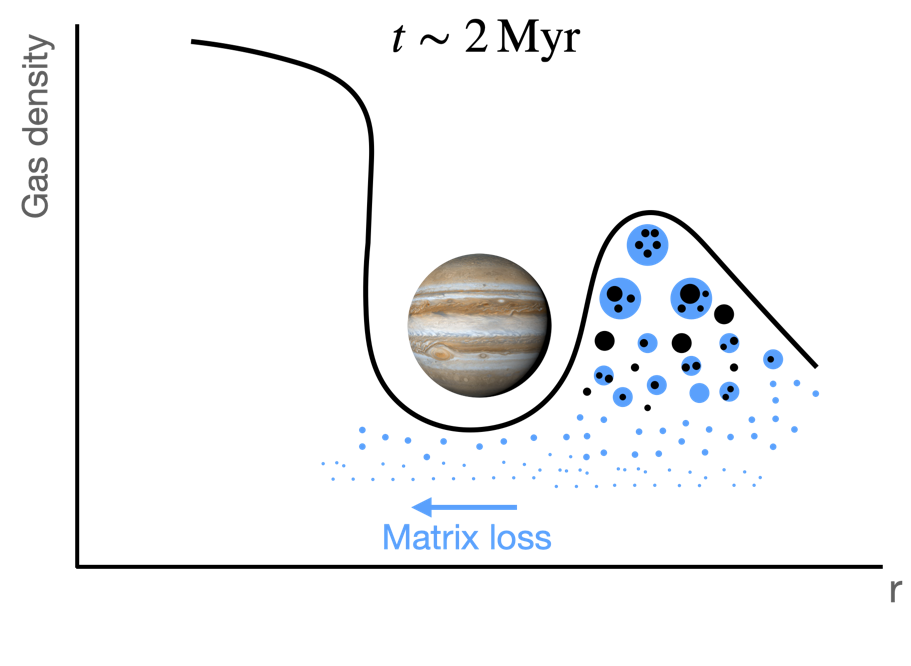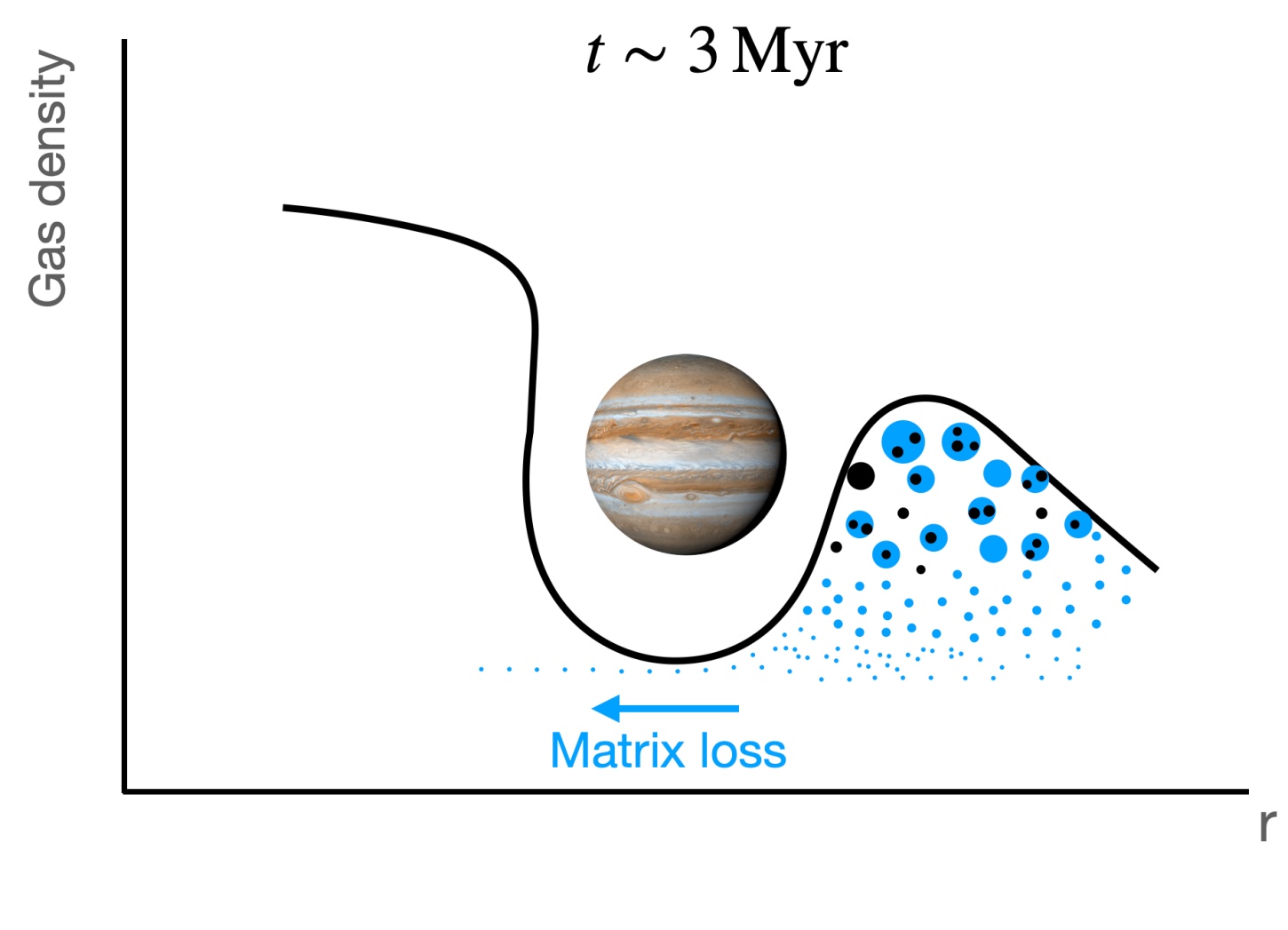Modeling the formation of carbonaceous chondrite parent bodies
- Max Planck Institute for Solar System Research, Planetary Science Department, Germany (gurrutxaga@mps.mpg.de)
Carbonaceous chondrites are some of the most primitive meteorites in our Solar System. They contain refractory inclusions, chondrules, and CI chondrite-like matrix, and originate from planetesimals accreted a few Myr after Solar System formation started. Recent work by Hellmann et al. (2023) showed that there is a fundamental link between the abundances of chondrules and Calcium-Aluminum-rich Inclusions (CAIs), highlighting their abundance is correlated in carbonaceous chondrites. Furthermore, their findings suggest a direct correlation between the abundance of fine-grained dust (i.e., matrix) within carbonaceous chondrites and the accretion time of their parent bodies. They proposed that variations in these abundances reflect the entrapment of CAIs and chondrule precursors within pressure maxima in the protoplanetary disk, likely associated with the gap opened during the formation of Jupiter.
Motivated by these findings, we employ Monte Carlo simulations of dust evolution to explore the plausibility of carbonaceous chondrite parent body formation in the outer regions of a Jupiter-induced gap. Our investigation includes various collision models between refractory inclusions, chondrules and matrix-like materials. At high gas densities, small dust is well-coupled to the gas and can cross the gap, softening the barrier between outer and inner Solar System materials. However, we show that less fragmentation-prone refractory inclusions and chondrules may not leak through the gap. Therefore, their abundance increases in the outer regions (see Figure 1, left panel). As the gas disperses over time, small dust decouples from the gas and gets trapped outside the gap, reducing the previous enrichment of refractory inclusions and chondrules (see Figure 1, right panel). Under favourable conditions for triggering streaming instability, it is possible to reproduce the formation of carbonaceous chondrite parent bodies rich in refractory inclusions and chondrules while their abundance decreases over time.
This scenario constrains current models of Solar System formation, as well as the intricate interactions between different constituents of carbonaceous chondrites and their incorporation into planetesimals. Furthermore, our results could provide valuable benchmarks for future laboratory experiments to elucidate how different materials can stick or fragment during collisions in protoplanetary disks.


Figure 1: Gap-opening by Jupiter at different stages. Blue and black dots indicate matrix-like material and refractory inclusions or chondrules, respectively. Left: at the early stages of the gap-opening, small fragments of matrix-like material leak through the gap, enriching the abundances of refractory inclusions and chondrules in the outer regions of the gap. Right: at later stages, gas density decreases, and matrix loss is reduced. Consequently, the abundance of matrix-like material increases outside the gap.
How to cite: Gurrutxaga, N., Drazkowska, J., and Kleine, T.: Modeling the formation of carbonaceous chondrite parent bodies, Europlanet Science Congress 2024, Berlin, Germany, 8–13 Sep 2024, EPSC2024-900, https://doi.org/10.5194/epsc2024-900, 2024.